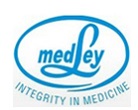Lubricant concentration in pharmaceutical manufacturing
Lubricants are inert materials which are added into granules prior to compression to:
- To decrease/prevent adhesion of the granules or powders to the surface of dies and punches and thus preventing wear and tear of dies and punches
- To improve the ejection of tablet from dies cavity after compression.
- To improve the flow of granules from hopper to the die cavity by reducing interparticle friction.
- To improve the blending, as poor flow can cause improper mixing of blends (content uniformity)
In pharmaceutical processes such as blending, tablet manufacturing, roller compaction, capsule filling lubrication is essential in order to reduce the friction between the surfaces of equipment and organic solids. Commonly used lubricants are magnesium stearate and stearic acid
There are four lubrication mechanisms:
- Hydrodynamic lubrication
- Elastohydrodynamic lubrication
- Mixed lubrication
- Boundary lubrication
First three are related to usage of liquid lubricants. Boundary lubrication is the most common mechanism functioning in pharmaceutical industry. In boundary lubrication, lubricant forms film/layer between the surfaces or at interfaces to reduce friction. Lubricants used in boundary lubrication are structurally long chain molecules with active end groups such as stearic acid and its metallic salts.
The end groups are:
- –NH₂ (long chain amine )
- –OH (long chain alcohol)
- -COOH (long chain fatty acids)
- Metal ions such as Mg²+
Molecules with these end groups are readily adsorbed on the surfaces of metals or other particles to form monolayer and multilayers.
Metallic salts of fatty acids: magnesium stearate, calcium stearate and zinc stearate are common examples of metallic salts of fatty acids used in pharmaceutical industry. The chemical structure of metallic salts (magnesium, calcium, zinc) of stearic acids

Fatty acids: These are most commonly used lubricants in pharmaceutical industry and stearic acid is most common one. Stearic acid straight chain structural monobasic acid found in animal fats and in cotton, coco and corn. Stearic acid can be macrocrystalline or microcrystalline
| Fatty acid | Formula | Molecular weight | Melting point ᵒC | Boiling point at 16 mm ᵒC |
| Stearic | CH₃(CH₂)₁₆COOH | 284 | 39.6 | 240 |
| Palmitic | CH₃(CH₂)₁₄COOH | 256 | 62.9 | 222 |
| Myristic | CH₃(CH₂)₁₂COOH | 228 | 54.4 | 202 |
Fatty acid esters: Glyceride esters- glyceryl monostearate, glyceryl tribehenate and glyceryl dibehenate
Sugar esters- sorbitan monosterate, sucrose monopalmitate
glyceryl dibehenate is effective substitute of magnesium stearate when magnesium stearate causes delay in dissolution and compatibility problems.
Inorganic materials and polymers: these lubricants are used when magnesium stearate is not appropriate. Inorganic material talc (hydrated magnesium silicate) Mg₃Si₄O₁₀(OH)₂ is used as lubricant or glidant. Due to its hydrophobicity and weal bonded sheet structure it is commonly used but is less efficient than magnesium stearate. Polymers such as PEG 4000 are used in solid dosage forms when use of magnesium stearate shows compression and chemical incompatibility problems.
| Water soluble lubricant | Recommended percentage |
| Carbowax PEG 4000/6000 | 1-5 |
| Boric acid | 1 |
| Sodium oleate | 5 |
| Sodium benzoate | 5 |
| Sodium acetate | 5 |
| Sodium lauryl sulfate | 1-5 |
| Magnesium lauryl sulfate | 1-2 |
| Sodium chloride | 5 |
| Water insoluble lubricant | Recommended percentage |
| Metal (Mg,Ca,Na) stearate | 0.25-2 |
| Stearic acid | 0.25-2 |
| Talc | 1-10 |
| High melting waxes | 1-5 |
| Glyceryl behenate | 0.5-3 |
| Maize starch | 5-10 |
| Staer-o-wet | 1-5 |











